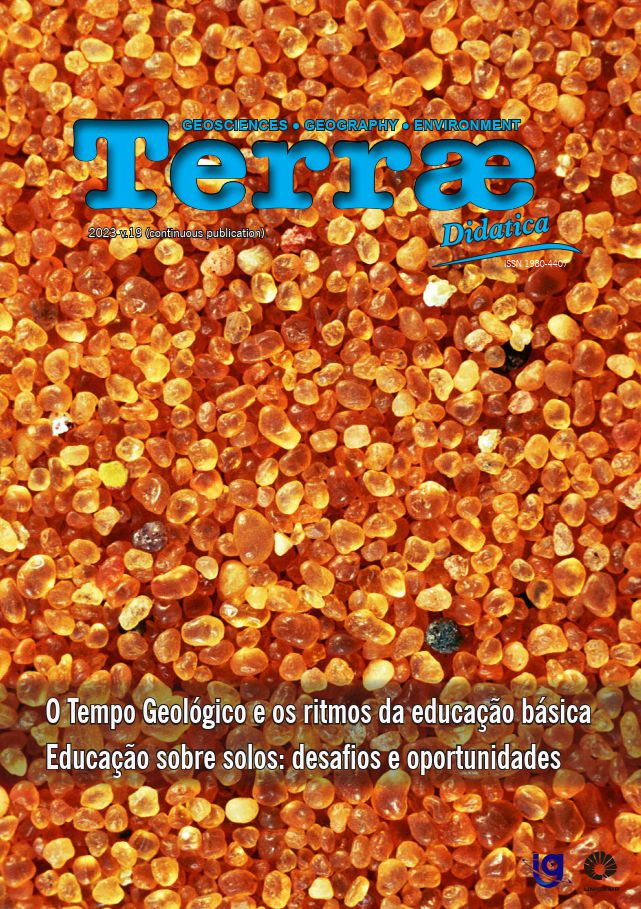Resumen
Introducción y Objetivo. Presentamos una revisión del artículo Falsificaciones y fraudes geológicas de Ruffel, Majury & Brooks, publicado en Earth-Science Reviews (2012) (doi: 10.1016/j.earscirev.2011.12.001). Metodología. El artículo aborda fraudes y falsificaciones recurrentes en la historia de la Geología, dividiéndolos en tres grupos: (a) aspectos económicos, como sustitución y falsificación de gemas y piedras preciosas, minería y extracción de gas y petróleo; (b) razones estéticas y académicas, principalmente en paleontología; y (c) eventos históricos y arqueológicos. Entre las principales motivaciones se encuentran la ganancia financiera, el atractivo estético y el desarrollo académico. Resultados. Tales prácticas no son recientes y traen importantes reflexiones sobre el papel de la Geología al revelar los fraudes. El principio de falsabilidad de Popper y el método científico se muestran esenciales para entender cómo las ciencias se ocupan de tales situaciones. En particular, los estudios geológicos utilizados en la detección de fraudes confieren mayor credibilidad a la Geología como campo científico. Conclusión. Esperamos poder adoptar una postura de 'cinismo saludable' frente a los informes científicos, comprender mejor el establecimiento de la Geología como ciencia e identificar situaciones sospechosas y criminales en las ciencias geológicas.
Citas
Acharya, A. (2009). Targeting Terrorist Financing: international cooperation and new regimes. Abingdon: Routledge. 241p.
Bernard, E. (2022). Exploring authenticity through classical art: originals, fakes and copies. Studies in Conservation, 67(1-2), 38-49. doi: 10.1080/00393630.2021.1970461.
Boles, J.D. (2008). Diamond detail and gem fraud status. Journal of Financial Regulation and Compliance, 16(1), 77-84. doi: 10.1108/13581980810853226.
Cole, J. R., & Godfrey, L. R. (1985). The Paluxy River footprint mystery -- solved. Creation/Evolution, 5(1). URL: https://eric.ed.gov/?id=ED265059. Acesso 21.02.2023.
Corbacho, J., & Sendino, C. (2012). Fossil fakes and their recognition. Deposits Magazine, 30, 35-40. URL: https://www.academia.edu/download/46505458/Fossil_fakes_and_their_recognition20160615-3420-k1ab35.pdf. Acesso 21.02.2023.
Dalton, R. (2000). Chasing the dragons. Nature, 406, 930-933. doi: 10.1038/35023182.
Darlington, J. (2020). Fake heritage: why we rebuild monuments. New Haven: Yale University Press. 248p.
Depalma, A. (1997). At end of a miner's rainbow, a cloud of confusion lingers. The New York Times, D1. URL: https://www.nytimes.com/1997/03/31/business/at-end-of-a-miner-s-rainbow-a-cloud-of-confusion-lingers.html. Acesso 21.02.2023.
Donnelly, L. J., & Ruffell, A. (2021). Emerging applications of forensic geology. In: Donnelly, L. J., Pirrie, D., Harrison, M., Ruffell, A. & Dawson, L. (Eds.). (2021). A Guide to Forensic Geology. London: The Geological Society. pp. 171-187.
Grimaldi, D. A., Shedrinsky, A., Ross, A., & Baer, N. S. (1994). Forgeries of fossils in “amber”: history, identification and case studies. Curator: The Museum Journal, 37(4), 251-274. doi: 10.1111/j.2151-6952.1994.tb01023.x.
Heinrich, P. V. (2007). Pseudoscience in Bosnia. Science, 318(5847), 42-43. doi: 10.1126/science.318.5847.42c.
Kuban, G. J. (1989). A matter of degree: an examination of Carl Baugh's alleged credentials. NCSE Reports, 9(6).
Le Billon, P. (2001). The political ecology of war: natural resources and armed conflicts. Political Geography, 20(5), 561-584. doi: 10.1016/S0962-6298(01)00015-4.
Le Billon, P. (2004). The geopolitical economy of ‘resource wars’. Geopolitics, 9(1), 1-28. doi: 10.1080/14650040412331307812.
Marcos, A. (2018). ¿Puede evitarse el fraude en ciencia? Investigación y Ciencia, 498, 44-45.
McBirney, A., & Janvier, P. (2005). The Trilobite Affair. English translation of H. Wild's Les Chiens Aboient, with annotations by the translators. Eugene: Bostok Press. 350p.
Murray, R. C. (2004). Evidence from the earth: forensic geology and criminal investigation. Missoula: Mountain Press Publishing. 240p.
Nicholls, C. C. (1999). The Bre-X hoax: a South East Asian bubble. The Canadian Business Law Journal, 32(2), 173-192.
Oakley, K. P., & Groves, C. P. (1970). Piltdown man: the realization of fraudulence. Science, 169(3947), 789. doi: 10.1126/science.169.3947.789.
Oliveira, A. F. M., & Oliveira, S. M. P. (2023). Fake news e divulgação científica: um estudo sobre o caso Atila Iamarino. Revista Docência e Cibercultura, 7(2), 141-163. doi: 10.12957/redoc.2023.67918.
Pain, S. (2004). Histories: Johann Beringer and the fraudulent fossils. New Scientist, 184(2479-2480), 74-75. URL: https://www.newscientist.com/article/mg18424793-300-histories-johann-beringer-and-the-fraudulent-fossils/. Acesso 21.02.2023.
Peluso, N. L., & Watts, M. (Eds.). (2001). Violent environments. Ithaca: Cornell University Press. 464p.
Popper, K. (1959). The Logic of Scientific Discovery. Abingdon: Routledge. 544p.
Popper, K. (1963). Conjectures and refutations: the growth of scientific knowledge. Abingdon: Routledge. 608p.
Romsom, E. (2022). Global oil theft: impact and policy responses. Helsinki: UNU-WIDER. WIDER Working Paper 2022/16. doi: 10.35188/UNU-WIDER/2022/147-1.
Ross, M. L. (2004). How do natural resources influence civil war? Evidence from thirteen cases. International Organization, 58(1), 35-67. doi: 10.1017/S002081830458102X.
Ruffell, A., Majury, N., & Brooks, W. E. (2012). Geological fakes and frauds. Earth-Science Reviews, 111(1-2), 224-231. doi: 10.1016/j.earscirev.2011.12.001.
Scientific American. (1856). Curious use of the microscope. Scientific American, 11(30), 240. URL: https://hdl.handle.net/2027/coo.31924080787611. Acesso 21.02.2023.
Veronesi, C. (2014). Falsifications and scientific progress: Popper as sceptical optimist. Lettera Matematica, 1(4), 179-184. doi: 10.1007/s40329-014-0031-7.
Washburn, S. L. (1953). The Piltdown hoax. American Anthropologist, 55(5), 759-762. URL: https://www.jstor.org/stable/664751. Acesso 21.02.2023.
Watts, J. (2013, September 9). NSA accused of spying on Brazilian oil company Petrobras. The Guardian, World.
Wild, H. (1926). Les chiens aboient. Paris: Albin Michel. 366p.
Referências das figuras
Goodayle, L. (n.d.). Plesiosaurus no Museu de História Natural de Londres. Photograph. URL: https://www.theguardian.com/science/2019/mar/16/mary-anning-female-fossil-hunter-changed-science. Acesso 21.02.2023 .
Phony tiara fooled Louvre. (1955). Life Magazine, 39(13), 144.
St. John, J. (2007). Fake amethyst geode (Morocco). Photograph. URL: https://www.flickr.com/photos/jsjgeology/31769323994/ and licensed under the terms of CC BY 2.0. Acesso 21.02.2023.

Esta obra está bajo una licencia internacional Creative Commons Atribución-NoComercial 4.0.
Derechos de autor 2023 Terræ Didatica


